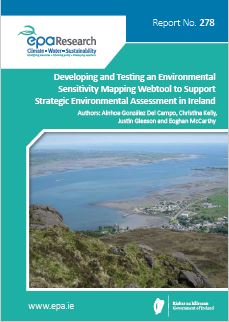Strategic Environmental Assessment

Strategic Environmental Assessment (SEA) is a systematic, formal process for evaluating any likely significant environmental effects arising as a consequence of a proposed plan or programme. These assessments are made at the earliest stage possible so they can be incorporated into any plans/programmes before their final adoption. Any alternatives to the plan/programme will also be taken into consideration. It should be ensured that there is consideration given to relevant biophysical, economic, social and political considerations. An environmental assessment should be carried out if a plan/programme is likely to have significant environmental impacts and falls under the scope of the requirements set out in the Directive.
The SEA Directive (2001/42/EC) came into force on 21st July 2001. It was transposed into Irish Law in 2004 (SI. No. 435 of 2004 as amended by SI. No. 200 of 2011 and SI. No. 436 of 2004 as amended by SI. No. 201 of 2011).
The SEA Directive mostly impacts public authorities as they are required to consider if any plans/programmes prepared by them come within its scope. SEA may be applied to plans/programmes such as land use, transport, energy, waste, agriculture, etc.
Environmental Impact Assessments (EIA) and SEA are similar in that they both aim to minimise the impact of a proposed project on the environment. EIA is also applied to developmental projects and is used to address specific, direct cause-effect relationships between the proposed plan and an environmental receptor. SEA requires the effects of a broad range of plans/programmes to be assessed while plans are still being developed which allows them to be adapted. SEA looks at the broader picture and can address cumulative, indirect and multiplier effects.
The EPA has recently published several reports/guidances applicable to SEA. These publications are outlined below:
- The Second Review of Strategic Environmental Assessment in Ireland (2020): This review suggests that the SEA process is more procedurally effective than reported in the previous review (2012), and there is more openness from public authorities to the process. However, there are some remaining challenges, particularly concerning monitoring and in the consideration of alternatives. The report includes several strategic recommendations. To view the review in full click here;
- Guidance on Strategic Environmental Assessment (SEA) Statements and Monitoring (2020): This guidance is based on the findings of the second review above. A SEA Statement includes how environmental considerations have been integrated into the plan/programme, how the environmental report and consultation have been considered, the reason for choosing the plan/programme adopted against other alternatives and the measures decided concerning monitoring. To see the guidance in full click here;
- Good Practice Guidance on Cumulative Effects Assessment in Strategic Environmental Assessment (2020): Cumulative effects are the result of two or more individual effects on a receptor. Cumulative Effects Assessment is the process of identifying, assessing and mitigating cumulative effects. This guidance intends to improve current SEA practice incrementally and cost-effectively. To see the guidance in full click here.
To see the full list of EPA publications on SEA and EIA, click here.
May 2020
